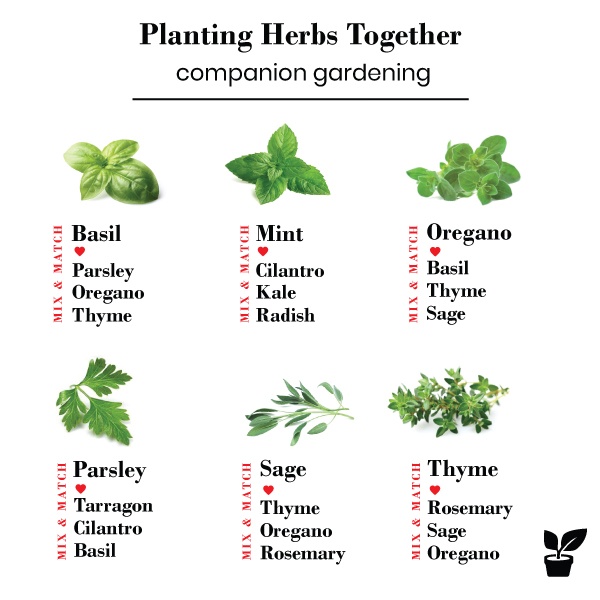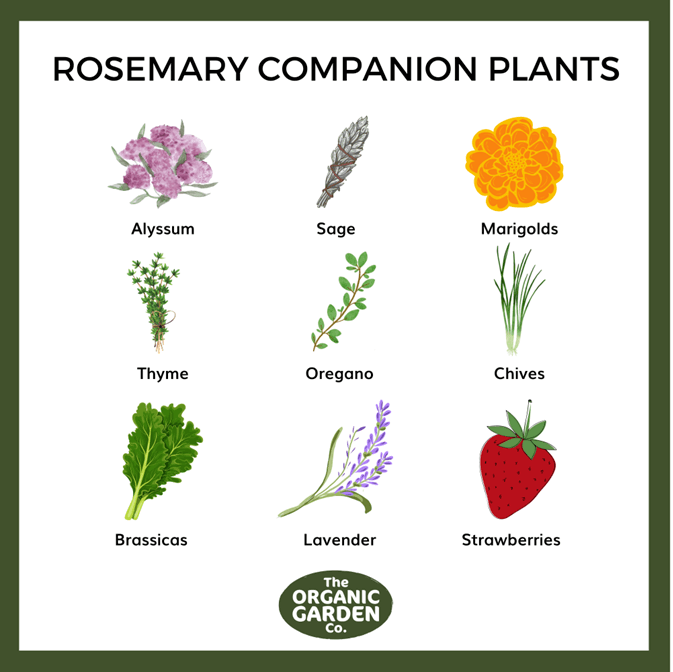The Ultimate Guide To Companion Planting With Parsley
The Ultimate Guide to Companion Planting with Parsley
Parsley is a versatile herb that can be used in a variety of dishes, from salads to soups to stews. It is also a valuable companion plant for other vegetables and herbs.
In this blog post, we will discuss the benefits of companion planting with parsley, as well as some of the best companion plants for parsley. We will also provide some tips on how to plant and care for parsley in your garden.
Benefits of Companion Planting with Parsley
There are many benefits to companion planting with parsley. Some of the benefits include:
- Improved pest control: Parsley can help to repel pests such as aphids, carrot flies, and spider mites.
- Increased pollination: Parsley is a good source of nectar, which attracts pollinators such as bees and butterflies.
- Improved soil health: Parsley helps to improve the soil's drainage and aeration, which can benefit other plants in the garden.
- Increased yields: Companion planting with parsley can help to increase the yields of other plants.
Best Companion Plants for Parsley
Some of the best companion plants for parsley include:
- Asparagus: Asparagus and parsley help to repel each other's pests.
- Beans: Beans help to fix nitrogen in the soil, which benefits parsley.
- Carrots: Carrots and parsley do not compete for the same nutrients, so they can be planted together without any problems.
- Chives: Chives help to repel pests such as aphids and carrot flies.
- Cucumbers: Cucumbers and parsley help to deter cucumber beetles.
- Lettuce: Lettuce and parsley can be planted together, but they should not be planted too close together as they will compete for nutrients.
- Peas: Peas help to improve the soil's nitrogen content, which benefits parsley.
- Spinach: Spinach and parsley can be planted together, and spinach can help to shade parsley and protect it from the sun.
Tips for Planting and Caring for Parsley
Parsley is a relatively easy plant to grow, but there are a few things you can do to ensure that it thrives in your garden.
- Plant parsley in full sun or partial shade.
- Water parsley regularly, especially during hot weather.
- Fertilize parsley every few weeks with a balanced fertilizer.
- Deadhead parsley flowers to encourage more foliage growth.
- Protect parsley from pests and diseases.
Conclusion
Parsley is a versatile and beneficial herb that can be used in a variety of ways. It is also a valuable companion plant for other vegetables and herbs. By following the tips in this blog post, you can plant and care for parsley in your garden so that you can enjoy its many benefits.
Parsley is a versatile herb that can be used in a variety of dishes. It is also a great companion plant, meaning that it can help to improve the growth and health of other plants in your garden.
Some of the best companion plants for parsley include:
- Asparagus: Asparagus and parsley are both nitrogen-fixing plants, which means they help to enrich the soil. They also attract beneficial insects, such as hoverflies, which help to control pests.
- Beans: Beans are another nitrogen-fixing plant, and they also help to deter pests such as cutworms.
- Carrots: Carrots and parsley benefit each other by attracting different types of beneficial insects. Carrots attract ladybugs, which help to control aphids, while parsley attracts hoverflies, which help to control whiteflies.
- Chives: Chives release a chemical that helps to repel pests such as carrot root fly. They also help to improve the flavor of parsley.
- Tomatoes: Parsley attracts hoverflies, which help to control aphids, which can be a problem for tomatoes.
If you are looking for more information about parsley companion plants, I recommend visiting Gardenia Inspiration. This website has a comprehensive list of companion plants, as well as information about the benefits of companion planting.
FAQ of parsley companion plants
Q: What are the best companion plants for parsley?
A: Parsley is a great companion plant for many other vegetables and herbs. Some of the best parsley companion plants include:
- Asparagus: Asparagus and parsley are a match made in heaven. Asparagus helps to deter asparagus beetles, which can be a problem for parsley. Parsley, in turn, helps to improve the flavor of asparagus.
- Carrots: Carrots and parsley are both members of the Apiaceae family, and they benefit from each other's presence. Parsley helps to repel carrot root flies, which can be a problem for carrots. Carrots, in turn, help to improve the flavor of parsley.
- Chives: Chives and parsley are both easy-to-grow herbs that can be planted together in the same garden bed. They have similar water and nutrient needs, and they help to deter pests such as aphids and spider mites.
- Tomatoes: Parsley can help to deter aphids and other pests that can be a problem for tomatoes. It can also help to improve the flavor of tomatoes.
- Roses: Parsley can help to repel rose beetles and other pests that can be a problem for roses. It can also help to improve the fragrance of roses.
Q: What plants should not be planted near parsley?
A: There are a few plants that should not be planted near parsley, including:
- Mint: Mint has spreading roots that can overtake other plants, including parsley.
- Fennel: Fennel is another member of the Apiaceae family, and it can cross-pollinate with parsley. This can lead to problems with seed-saving.
- Dill: Dill can attract the same pests as parsley, so it is best to avoid planting them together.
- Coriander: Coriander can also attract the same pests as parsley, so it is best to avoid planting them together.
Q: When should I plant parsley companion plants?
A: The best time to plant parsley companion plants is in the spring or fall. This will give them enough time to grow and establish themselves before the hot summer weather arrives.
Q: How far apart should I plant parsley companion plants?
The spacing requirements for parsley companion plants will vary depending on the specific plants involved. However, as a general rule, you should space them at least 12 inches apart. This will give them enough room to grow and thrive.
Q: What are the benefits of companion planting with parsley?
There are many benefits to companion planting with parsley. Some of the benefits include:
- Disease and pest control: Parsley can help to repel pests and diseases that can affect other plants.
- Improved pollination: Parsley can help to attract pollinators, which can improve pollination of other plants in the garden.
- Enhanced flavor: Parsley can help to enhance the flavor of other plants.
- Increased yields: Companion planting can help to increase the yields of other plants.
Image of parsley companion plants
- Marjoram: Marjoram and parsley are both Mediterranean herbs that attract beneficial insects and repel pests. They can be planted together in the same pot or garden bed.

- Oregano: Oregano and parsley are both members of the mint family and have similar growing requirements. They can be planted together in a sunny spot in the garden.

- Rosemary: Rosemary and parsley are both herbs that can tolerate dry conditions. They can be planted together in a pot or garden bed that receives full sun.

- Sage: Sage and parsley are both herbs that can repel pests. They can be planted together in a pot or garden bed to deter insects from your other plants.

- Thyme: Thyme and parsley are both herbs that can attract beneficial insects. They can be planted together in a pot or garden bed to help improve pollination.

Post a Comment for "The Ultimate Guide To Companion Planting With Parsley"